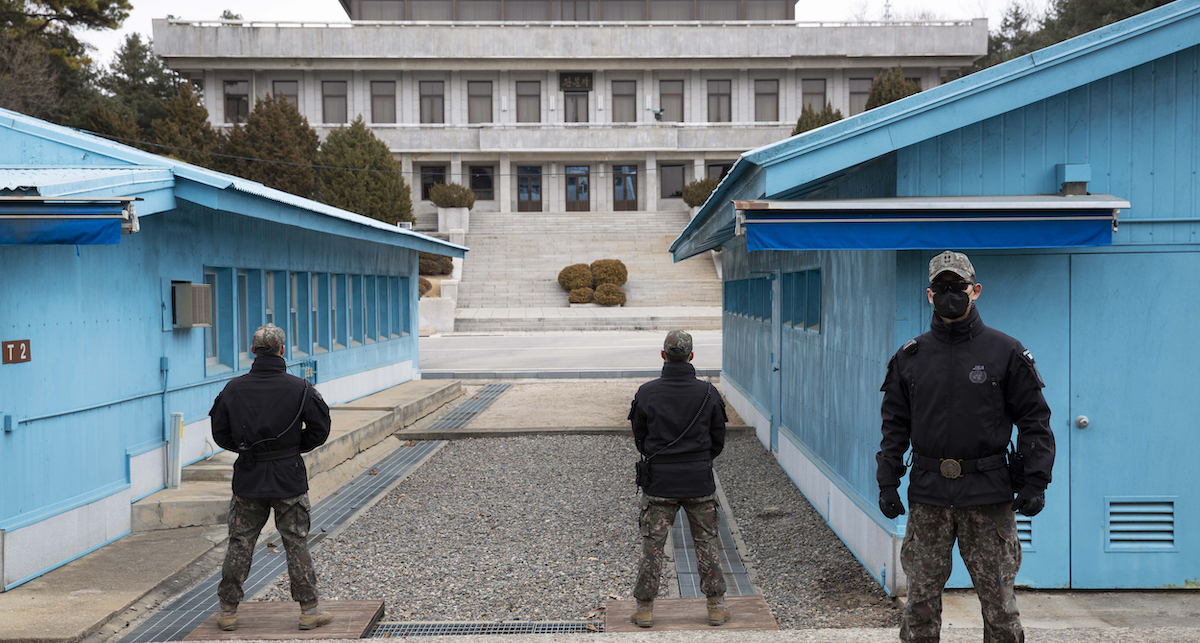An American soldier entered North Korea on Tuesday by crossing the border line that divides the two Koreas during a guided tour of the Joint Security Area (JSA, which translates into “Joint Security Area”), the only point where the armies of the two countries are in direct contact. The soldier had recently spent a few months in prison in South Korea for an assault, and was about to be transferred to the United States where he was likely to receive some other form of punishment. It is not clear whether the soldier, whose name is Travis King, wanted to desert or not: once in North Korea he was arrested and taken away.
The Joint Security Area is the place where the very long and exhausting armistice negotiations that ended the Korean War were held between 1951 and 1953. Since then it has become one of the most peculiar places in the world, where the armies of the North and the South are located a few tens of meters away from each other and guard a short stretch of unfenced border made visible only by a wall a few centimeters high, which can be easily crossed with one step.
The Korean War began in 1950, when the Democratic People’s Republic of Korea (the official name of North Korea) invaded the Republic of Korea (South Korea). The bulk of the armed clashes lasted about a year, between June 1950 and June 1951, and were quite bloody. On North Korea’s side, China participated in the war (and to a lesser extent the Soviet Union, which mainly sent weapons) and on South Korea’s side, the United States participated, together with other countries under a United Nations mandate. After many upheavals, the prewar borders were reestablished roughly, and the border between the two Koreas was restored to where it is today, a 150-mile (248 km) horizontal line running roughly along the 38th parallel.
Armistice negotiations began in 1951 and ended two years later. They were held in Panmunjom, a small town along the border line (actually slightly to the north), and both Koreas and their allies participated, especially China on one side and the United Nations on the other, with the United States to have the predominant role. After exhausting negotiations, which mainly concerned the role and exchanges of prisoners of war, an armistice agreement was finally signed, i.e. the cessation of hostilities. The armistice was never followed by a real peace agreement: formally, the two Koreas are still at war.
The armistice agreement also led to the creation of a Demilitarized Zone, i.e. a strip of land of two kilometers north and south of the border from which the armies of the two countries have respectively withdrawn (the Demilitarized Zone is therefore four kilometers wide and long as much as the border). Despite the name, the Demilitarized Zone is one of the most militarized areas in the world: it is filled with mines and surrounded by electric fences and barbed wire, there are surveillance cameras and armed guards 24 hours a day.
In the village of Panmunjom, where the agreements were stipulated, the Joint Security Area was instead created, a place of great military-political and symbolic value. The buildings where the agreements were made are still standing, and are perfectly divided in half by the border line. They have been painted blue (the color of the UN) and in the main building there is still the table where the armistice agreement was signed. This small complex of blue buildings cut in half by the border is today called the “village of the armistice”, or more optimistically the “village of peace”.
The Joint Security Area is managed in the north by North Korea and in the south by the United Nations Command. The border between the two countries remains fairly guarded: according to the initial agreements, only 35 soldiers on each side could remain in the area, armed with a single pistol each or non-automatic rifles. There have been numerous moments of crisis or tension in the Joint Security Area over the decades. Many soldiers, especially from the North Korean side, have tried to defect to the south. Furthermore, loudspeakers continued to function for decades on both sides, sending propaganda from their respective countries at very high volume. The loudspeakers were dismantled after a 2018 deal.
On the South Korean side, the Panmunjom complex can also be visited by tourists. Very restricted and controlled tours are organized in the Joint Security Area: no particular requirements are needed to participate, even if places are very limited and tours can be canceled at the last moment for military and security reasons. During the tour, participants are instructed on a series of behaviors to follow, including the prohibition of crossing the border. The soldier who crossed over to North Korea was participating in one such visit.
In recent years there has been an important series of meetings in the Joint Security Area: in 2018 the North Korean dictator Kim Jong-un and the then South Korean president Moon Jae-in met in the Area and shook hands right above the low wall of confine. The following year, then President Donald Trump met Kim Jong Un along the low wall, and became the first sitting president in US history to pass him and take a few steps in North Korea.
